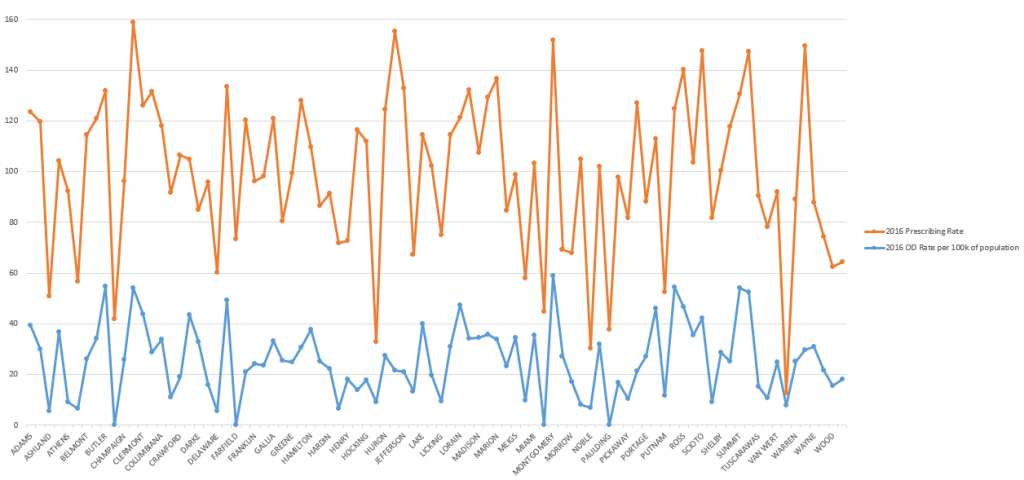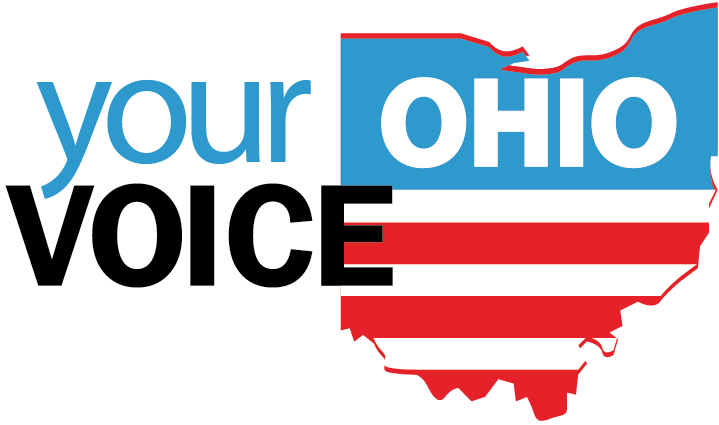Of all unintentional overdose deaths in Ohio in 2016, 20.6 percent had an opioid prescription in the previous 30 days. Last week, we took a closer look at the data and some prescribing trends. After graphing 2016 prescribing rates for each county, as well as 2016 fatal overdoses, we noticed some interesting correlations.

Although prescribing rates in Ohio have been declining for the past couple of years, the seeds of the epidemic were planted nearly two decades ago.
Opioids have been used in societies all over the world and their use can actually be traced back to 3400 B.C. It can be an extremely important drug for those dealing with severe chronic pain or those in end of life care. But more recently we’ve witnessed a steep increase in prescriptions. Sales of prescription opioids in the U.S. nearly quadrupled from 1999 to 2014, despite there being no overall change in the amount of pain Americans report.
Direct-to-Consumer (DTC)
What there has been a change in, is the amount of funding pharmaceutical companies have been funneling toward advertisement. In 2015, the top pharmaceutical companies spent a record-breaking $5.4 billion on DTC ads, according to Pharmaceutical Commerce. That same year, Americans spent a record $457 billion on prescription drugs. Critics say the ads drive up drug prices and erode the patient-doctor relationship.
According to Kantar Media, two-thirds of adults take some kind of action after seeing a drug or device ad, and about 40 percent make an appointment with their doctor. Patients conducting research prior to a doctor’s appointment are 35% more likely than the average adult to ask their doctors for drugs they see in DTC ads.
Doctors
DTC Advertising isn’t the only focus for the pharmaceutical companies. According to the Government Accountability Office: Purdue Pharmaceuticals “conducted an extensive campaign to market and promote OxyContin using an expanded sales force to encourage physicians, including primary care specialists, to prescribe OxyContin not only for cancer pain but also as an initial opioid treatment for moderate-to-severe noncancer pain.”
Furthermore, they found Purdue has funded over 20,000 pain-related educational programs through direct sponsorship or financial grants. In order for doctors to maintain their medical licenses, they are required by many states to participate in these same continuing medical education (CME) programs.
Taking Legal Action
Increasingly, we’re seeing more and more cities, counties and states pointing the finger at the pharmaceutical industry for the crisis that has devastated their citizens. In May of 2017, Ohio became one of the 11 states that have filed a lawsuit against pharmaceutical companies. The lawsuit does not specify a dollar amount, but is seeking remedies including punitive damages and compensatory damages “for costs incurred by Ohio for its increased spending for healthcare, criminal justice, social services and education,” according to a press release from DeWine.
Next week, we will discuss another initiative some states are taking to pass legislation taxing pain medications. To follow our new research and research of our local media partners, sign up for our weekly news roundup.






[…] have explored the role pharmacal companies have played in our current opioid crisis and learned that the top pharmaceutical companies spend billions of […]